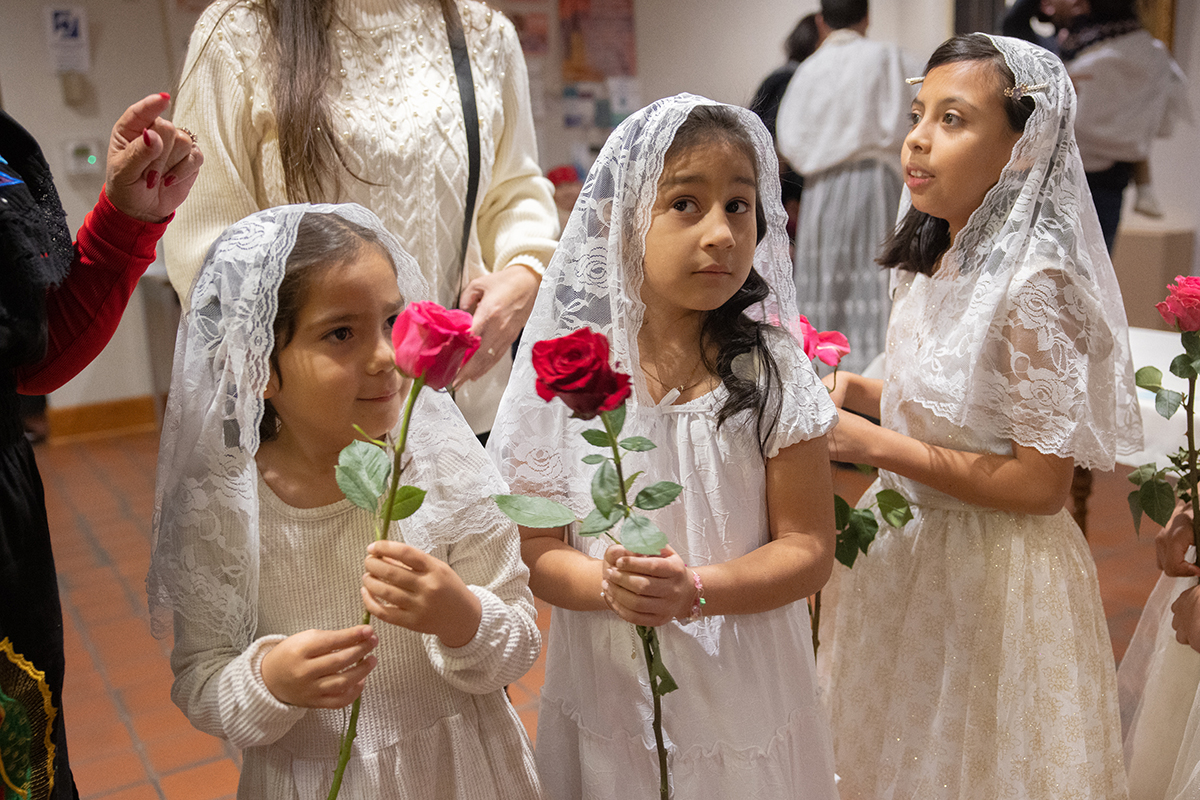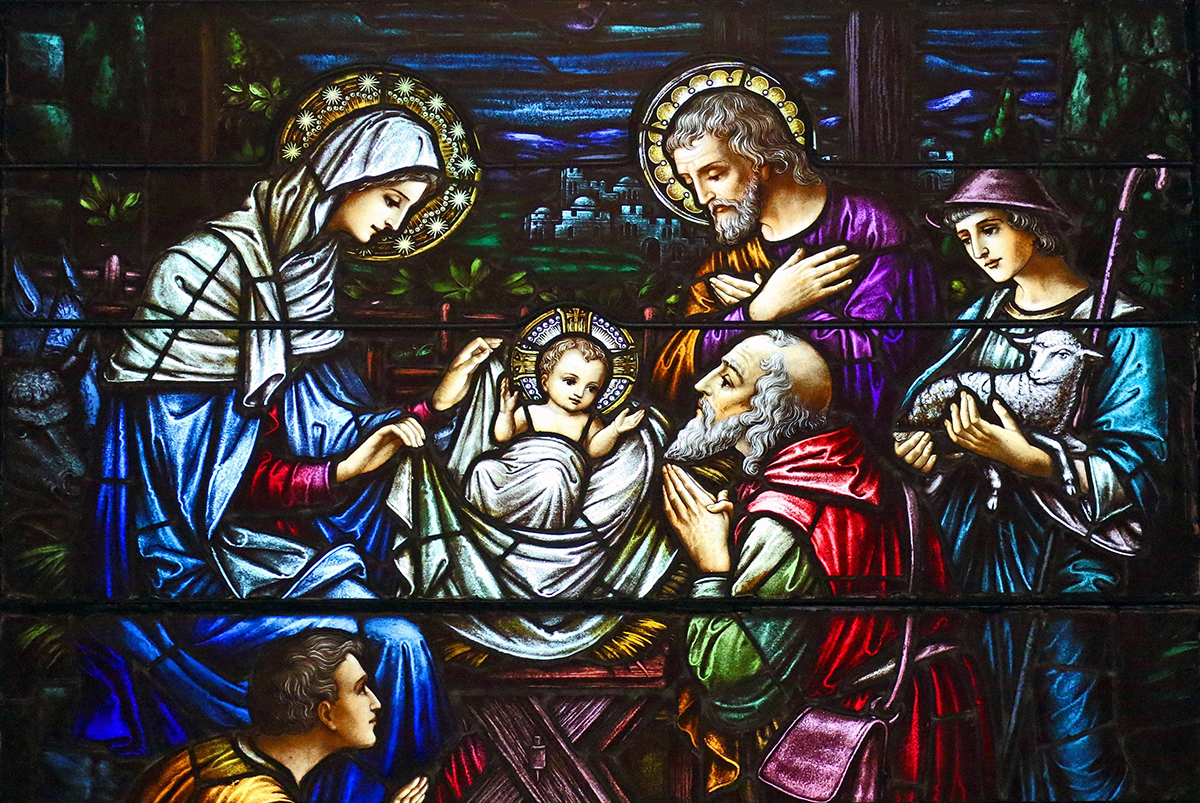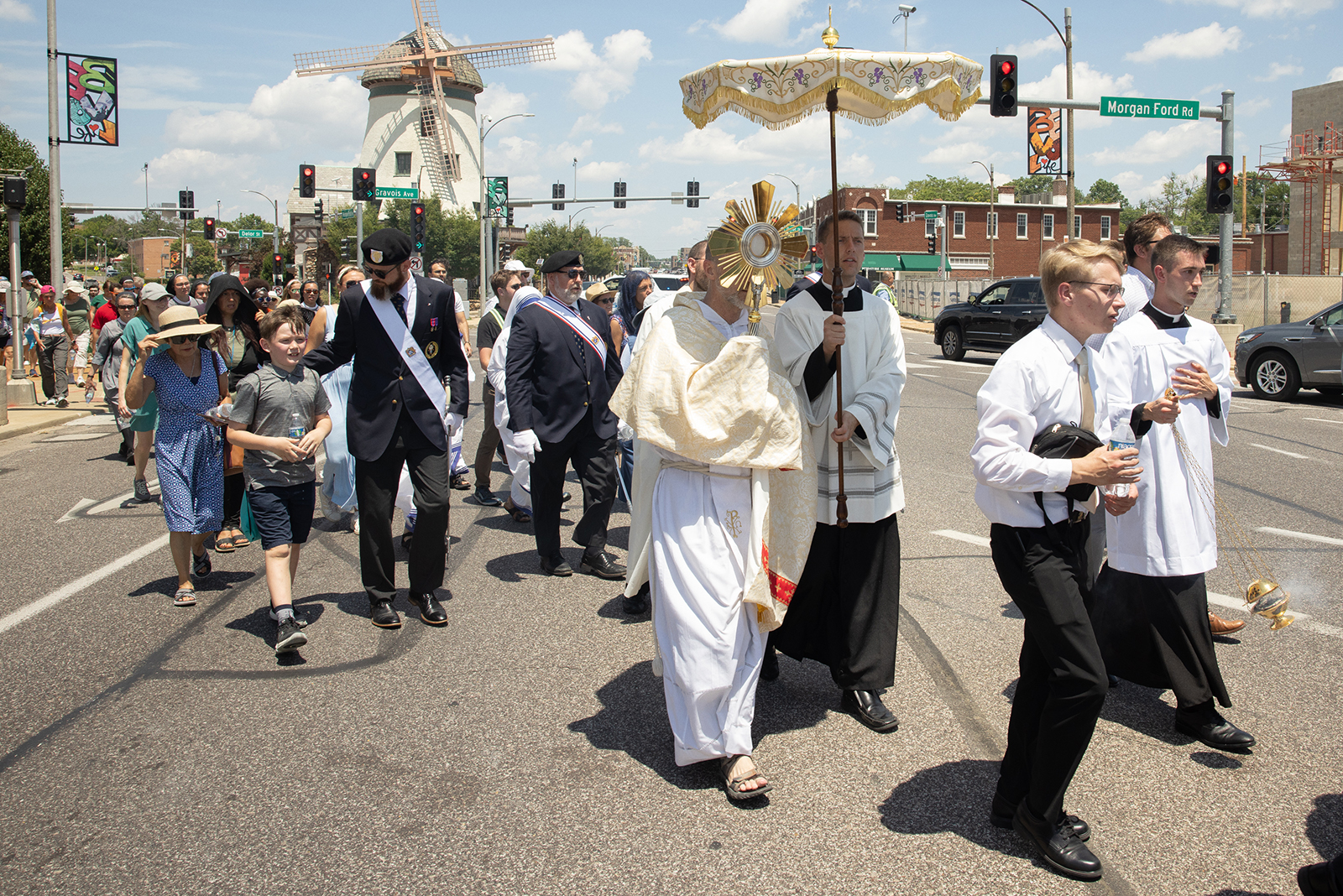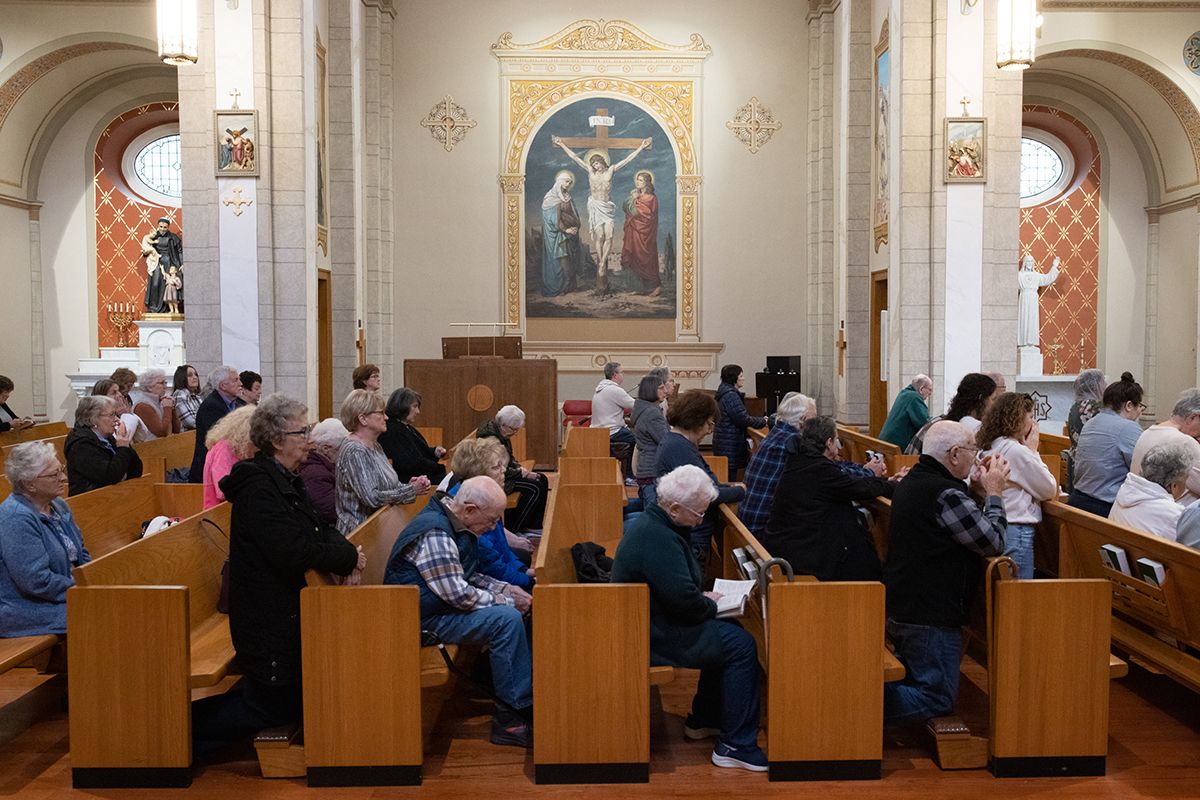Black male teachers at Cardinal Ritter College Prep lead by example
Teaching runs in Jaryn Blackshear-Bryant’s blood, he says.
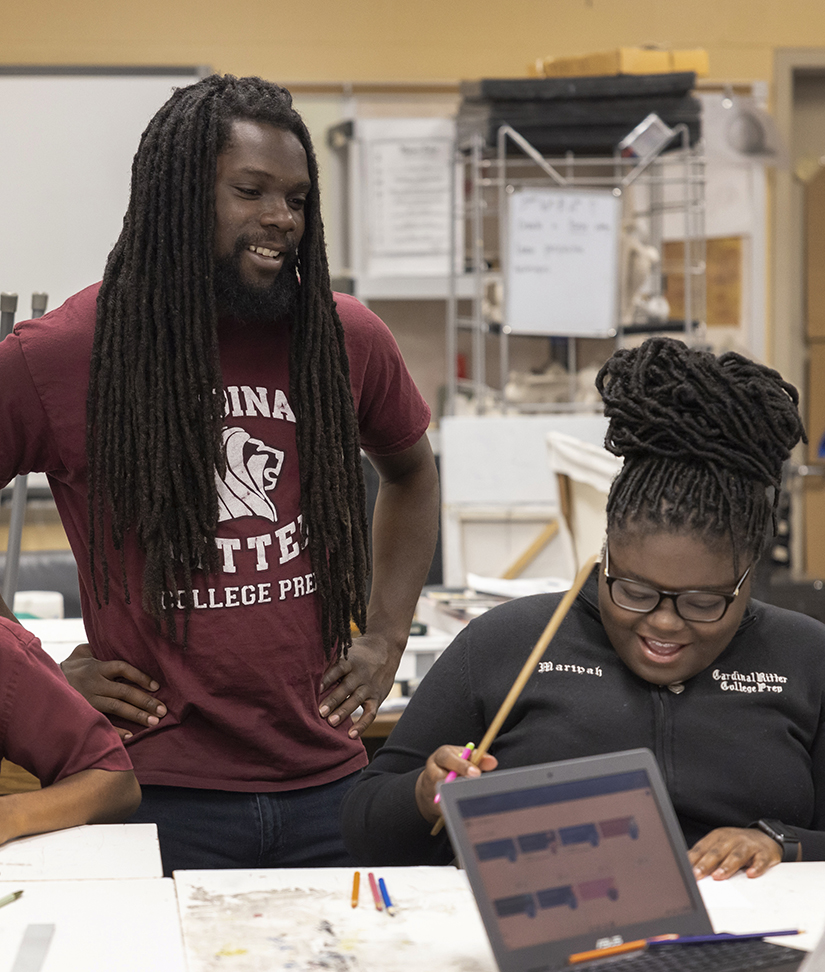
Blackshear-Bryant teaches art at Cardinal Ritter College Prep High School in north St. Louis — his alma mater — alongside his aunt Juanita Blackshear, a theology teacher. When he was a student, his uncle served as principal and a cousin as a counselor; his mother is a retired educator who now works at the school, too.
“It’s a running joke in our family that the Blackshears run Cardinal Ritter,” Blackshear-Bryant said.
Blackshear-Bryant is one of 18 Black male teachers and administrators at Cardinal Ritter this year — 40% of the school’s staff. Nationally, about 2% of teachers are Black men.
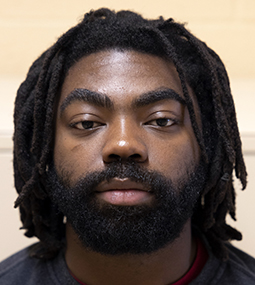
On Aug. 15, Cardinal Ritter President Tamiko Armstead shared a photo on social media showing the group of men, pointing out Cardinal Ritter’s success in finding Black male teachers. The social media post garnered local and national attention, with more than 1,100 Facebook shares and more than 400 retweets and 2,600 favorites on Twitter.
Cardinal Ritter College Prep has served a majority African-American student population since its founding in 1979.
Blackshear-Bryant graduated from Saint Louis University in 2019 intending to go into banking, but a family friend encouraged him to apply for Teach for America. He was accepted to the program, beginning his career at Westview Middle School in the Riverview Gardens School District. That fall, he attended the Black Men Educator Convening in Philadelphia.
“That’s where I first learned that only 2% of teachers nationwide are Black men,” he said. “That lit a fire in me, like, ‘OK, you’re in a position to do something about this.’”
Now in his third year at Cardinal Ritter, Blackshear-Bryant can’t imagine doing anything else, he says. He takes his position as a role model seriously; while he grew up in a two-parent household with lots of support, he knows that not all of his students have the same.
“I understood that I had somebody in my corner for me all the time, but that’s not necessarily the reality for everybody else,” he said. “Everybody needs that, but everybody doesn’t have that.”
A parishioner at St. Matthew the Apostle Parish in the Ville neighborhood, Blackshear-Bryant brings his faith into the art room, letting it guide conversations not just about art but also about life.
“As a Black Catholic, I’m able to talk about some of those more touchy subjects,” he said. Discussions about religious artwork, like Leonardo da Vinci’s “Last Supper,” have led to bigger questions: What does God look like? Can He look like me? How is God relatable to us? If a halo symbolizes holiness in a painting, what does it actually mean to be holy?
“I want to be able to teach them things they can take with them, be it art skills and techniques or just how to navigate through life — how to be more successful in whatever avenue you choose,” Blackshear-Bryant said.
Science teacher Jeffrey Taylor is also an alumnus of Cardinal Ritter. He grew up attending St. Alphonsus Ligouri “Rock” Church, and as a student at Loyola Middle School and Cardinal Ritter, he felt fortunate
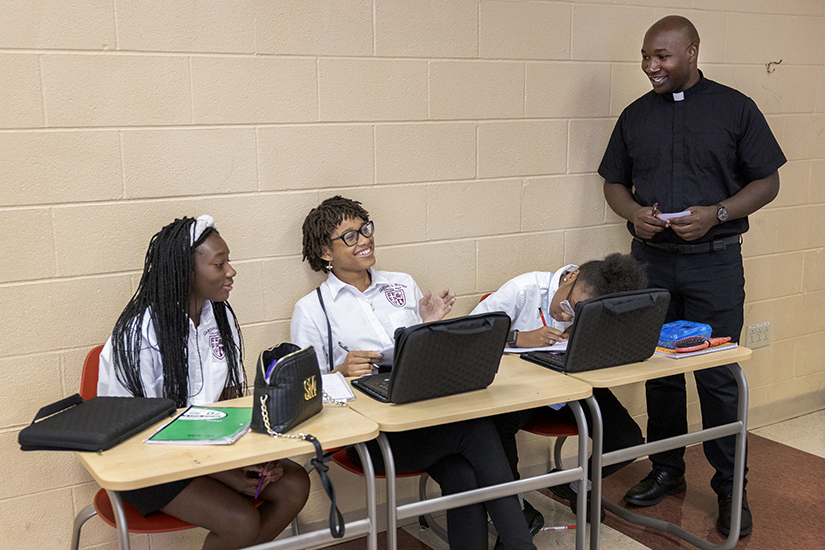
to have many Black male teachers of his own as a teenager.
“It was very important for me to see Black men in a form where they’re being professional,” he said. “They made everything seem so attainable.”
Now in his second year teaching after graduating from Missouri S&T in 2021, he hopes his presence as a young Black teacher can be a source of inspiration to his students.
“They can look at me and say, ‘Well, if he can do this within four or five years post high school, why can’t I?’” he said. “I feel like it may even inspire them to want to teach, or at least give back to the community that gave to them.”
Father Thomas Sserwadda, a priest of the Diocese of Masaka, Uganda, teaches theology and serves as the school’s chaplain. He’s spending the year at Cardinal Ritter as a practicum for his master’s program at Saint Louis University, where he’s pursuing a master’s of theology with an emphasis in religious education.
Father Sserwadda enjoys being able to share stories of life in Uganda, offer the sacraments and serve as a witness to the joy of the priesthood with the students, he said.
“It’s important for them to see a priest who can represent Christ to them while also passing on knowledge to them through teaching,” he said. “The important thing is bringing God close to them in the classrooms.”
The majority of Cardinal Ritter’s students are not Catholic, and many are curious about the life of a priest because they may not have gotten to know any before, Father Sserwadda said. “They come to appreciate that a priest is one of us and can just talk with us,” he said.
Like Blackshear-Bryant and Taylor, Father Sserwadda emphasized the importance of serving as a positive presence and role model to the students each day.
“The Gospel of Christ is seen through the life of a witness,” he said.
>> Cardinal Ritter College Prep High School
Cardinal Ritter College Prep is a Catholic urban high school which educates primarily African-American young men and women and prepares them for leadership roles in a multi-ethnic society.
The mission of Cardinal Ritter College Prep High School is to provide an exceptional Catholic educational experience to youth that instills attitudes of success and self-worth through faith development, academic excellence and leadership.
To learn more about the school, visit cardinalritterprep.net.
Teaching runs in Jaryn Blackshear-Bryant’s blood, he says. Jaryn Blackshear-Bryant, left, a fine arts teacher at Cardinal Ritter College Prep, worked with senior Mariyah Crawford on Sept. 9 at the … Black male teachers at Cardinal Ritter College Prep lead by example
Subscribe to Read All St. Louis Review Stories
All readers receive 5 stories to read free per month. After that, readers will need to be logged in.
If you are currently receive the St. Louis Review at your home or office, please send your name and address (and subscriber id if you know it) to subscriptions@stlouisreview.com to get your login information.
If you are not currently a subscriber to the St. Louis Review, please contact subscriptions@stlouisreview.com for information on how to subscribe.

